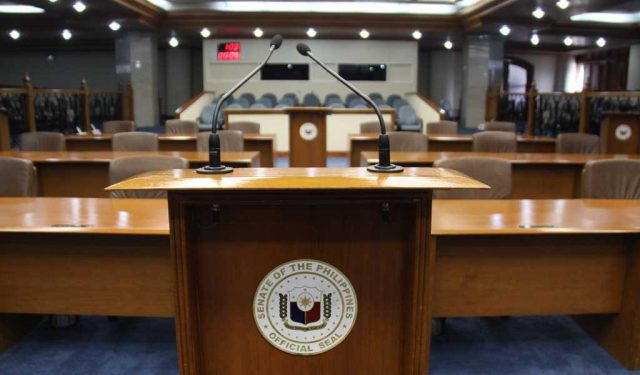WASHINGTON/TEL AVIV — US President Donald J. Trump, hosting Israeli Prime Minister Benjamin Netanyahu at the White House on Monday, said the United States had scheduled talks with Iran and indicated progress on a con-troversial effort to relocate Palestinians out of Gaza.
Speaking to reporters at the beginning of a dinner between US and Israeli officials, Mr. Netanyahu said the United States and Israel were working with other countries who would give Palestinians a “better future,” suggesting that the residents of Gaza could move to neighboring nations.
“If people want to stay, they can stay, but if they want to leave, they should be able to leave,” Mr. Netanyahu said.
“We’re working with the United States very closely about finding countries that will seek to realize what they always say, that they wanted to give the Palestinians a better future. I think we’re getting close to finding several countries.”
Mr. Trump, who initially demurred to Mr. Netanyahu when asked about the relocating of Palestinians, said the countries around Israel were helping out. “We’ve had great cooperation from… surrounding countries, great coop-eration from every single one of them. So something good will happen,” Mr. Trump said.
The president earlier this year floated relocating Palestinians and taking over the Gaza Strip to turn it into the “Riviera of the Middle East.” Gazans criticized the proposal and vowed never to leave their homes in the coastal en-clave. Human rights groups condemned the plan as ethnic cleansing.
Mr. Trump and Mr. Netanyahu met for several hours in Washington while Israeli officials continued indirect negotiations with Hamas aimed at securing a US-brokered Gaza ceasefire and hostage-release deal. Mr. Netanyahu re-turned to the Blair House guest house late on Monday, where he is due to meet Vice-President JD Vance at 9:30 EDT on Tuesday.
Mr. Netanyahu’s visit follows Mr. Trump’s prediction, on the eve of their meeting, that such a deal could be reached this week. Before heading to Washington, the right-wing Israeli leader said his discussions with Mr. Trump could help advance negotiations under way in Qatar between Israel and the Palestinian militant group.
It was Mr. Trump’s third face-to-face encounter with Mr. Netanyahu since returning to office in January, and came just over two weeks after the president ordered the bombing of Iranian nuclear sites in support of Israeli air strikes. Mr. Trump then helped arrange a ceasefire in the 12-day Israel-Iran war.
Mr. Trump said his administration would be meeting with Iran. “We have scheduled Iran talks, and they… want to talk. They took a big drubbing,” he said.
Mr. Trump’s Middle East envoy Steve Witkoff said the meeting would take place in the next week or so.
Mr. Trump said he would like to lift sanctions on Iran at some point. “I would love to be able to, at the right time, take those sanctions off,” he said.
Iranian President Masoud Pezeshkian said in an interview released on Monday that he believed Iran could resolve its differences with the United States through dialogue.
Mr. Trump and his aides appeared to be trying to seize on any momentum created by the weakening of Iran, which backs Hamas, to push both sides for a breakthrough in the 21-month Gaza war.
The two leaders, with their top advisers, held a private dinner in the White House Blue Room, instead of more traditional talks in the Oval Office, where the president usually greets visiting dignitaries.
Outside, hundreds of protesters, many wearing Palestinian keffiyeh scarves and waving Palestinian flags, gathered near the White House, waving banners that read “Stop Arming Israel” and “Say No to Genocide.” They also called for Mr. Netanyahu’s arrest, referring to the International Criminal Court’s arrest warrant against the Israeli leader over alleged war crimes in Gaza.
Mr. Netanyahu met earlier on Monday with Mr. Witkoff and Secretary of State Marco Rubio. He planned to visit the US Capitol on Tuesday to see congressional leaders.
During their meeting, Mr. Netanyahu gave Mr. Trump a letter that he said he had used to nominate the US president for the Nobel Peace Prize. Mr. Trump, appearing pleased by the gesture, thanked him.
Ahead of their visit, Mr. Netanyahu told reporters Israeli negotiators were driving for a deal on Gaza in Doha, Qatar’s capital.
Israeli officials also hope the outcome of the conflict with Iran will pave the way for normalization of relations with more of its neighbors such as Lebanon, Syria and Saudi Arabia.
SECOND DAY OF QATAR TALKS
Mr. Witkoff, who played a major role in crafting the 60-day ceasefire proposal at the center of the Qatar negotiations, will travel to Doha this week to join discussions there, White House press secretary Karoline Leavitt told report-ers earlier on Monday.
In a sign of continued gaps between the two sides, Palestinian sources said Israel’s refusal to allow the free and safe entry of humanitarian aid into Gaza remains the main obstacle to progress in the indirect talks. Israel insists it is taking steps to get food into Gaza but seeks to prevent militants from diverting supplies.
On the second day of negotiations, mediators hosted one round and talks were expected to resume in the evening, the Palestinian sources told Reuters.
The US-backed proposal envisages a phased release of hostages, Israeli troop withdrawals from parts of Gaza and discussions on ending the war entirely.
Hamas has long demanded a final end to the war before it would free remaining hostages; Israel has insisted it would not agree to halt fighting until all hostages are released and Hamas dismantled.
Mr. Trump told reporters last week that he would be “very firm” with Mr. Netanyahu on the need for a speedy Gaza deal and that the Israeli leader also wanted to end the war.
Some of Mr. Netanyahu’s hardline coalition partners oppose halting military operations but, with Israelis having become increasingly weary of the Gaza war, his government is expected to back a ceasefire if he can secure ac-ceptable terms.
A ceasefire at the start of this year collapsed in March, and talks to revive it have so far been fruitless. Meanwhile, Israel has intensified its military campaign in Gaza and sharply restricted food distribution.
Gazans were watching closely for any sign of a breakthrough. “I ask God almighty that the negotiating delegation or the mediators pressure with all their strength to solve this issue, because it has totally became unbearable,” said Abu Suleiman Qadoum, a displaced resident of Gaza city.
The Gaza war erupted when Hamas attacked southern Israel in October 2023, killing around 1,200 people and taking 251 hostages. Some 50 hostages remain in Gaza, with 20 believed to be alive.
Israel’s retaliatory war in Gaza has killed over 57,000 Palestinians, according to the enclave’s health ministry. Most of Gaza’s population has been displaced by the war and nearly half a million people are facing famine within months, according to United Nations estimates.
Mr. Trump has been strongly supportive of Mr. Netanyahu, even wading into domestic Israeli politics last month by criticizing prosecutors over a corruption trial against the Israeli leader on bribery, fraud and breach-of-trust charges that Mr. Netanyahu denies. — Reuters










